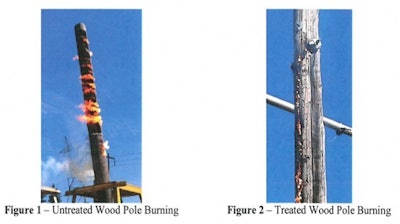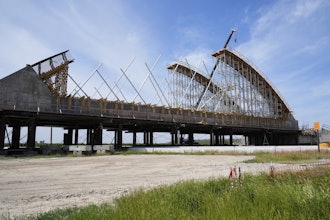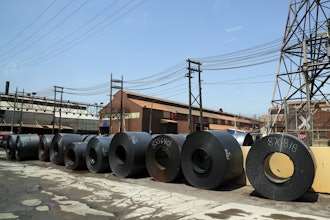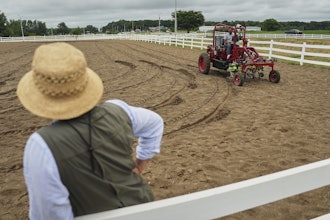
Sun FireDefense announced the results of a test that used a fire retardant with the Department of Energy's Bonneville Power Administration.
An engineering and technical service report titled "Evaluation of Wood Pole Fire Retardant Treatment" energized two field-aged cedar poles with a simulated lightning strike which resulted in the "treated pole burning less vigorously and self-extinguishing more quickly." The test was significant in that the heat of a lightning strike is approximately 50,000 degrees in comparison to a typical wildfire, which is approximately 1400 degrees and the application for which the spray formula was developed and patented.
The test consisted of the Bonneville Transmission Line Technical Services (TELM) group spraying one pole with Sun Fire Defenses' SPF3000 fire retardant, allowing it to dry and cure. They then energized both poles from a 460-kV winding of Bonneville Fog Chamber test transformer. It was grounded through a Pearson 110a current transformer used to measure the current through the pole. A Terahertz fiber link was used to transmit the current measurement into the control room where it was displayed on a handheld Fluke meter. Infrared images were taken of the initial tests on the treated pole. The infrared image clearly shows the path of the current through the pole.
"The SPF3000 was formulated to be sprayed on home building materials, dried and cured prior to a fire," said CEO of Sun FireDefense, Jim Moseley. "For the utilities, this testing is significant based on the hundreds of millions of dollars in fines and lawsuit settlements they have endured that claim utility poles have sparked fires. Fire suppression systems can prevent wildfires from sparking events; this test shows that our product may be an effective tool. Just last month, PG&E was sued by plaintiff's alleging they were responsible for the Mosquito Fire that burned 76,000 acres, destroyed more than one hundred structures in the area. Southern California Edison faced multiple class action lawsuits because of the Woolsey fire damage. It is our hope to not only serve as an initiative-taking measure that homeowners, and now the utilities can use, as there are only so many firefighters on the ground that respond when wildfires are already in motion."






















